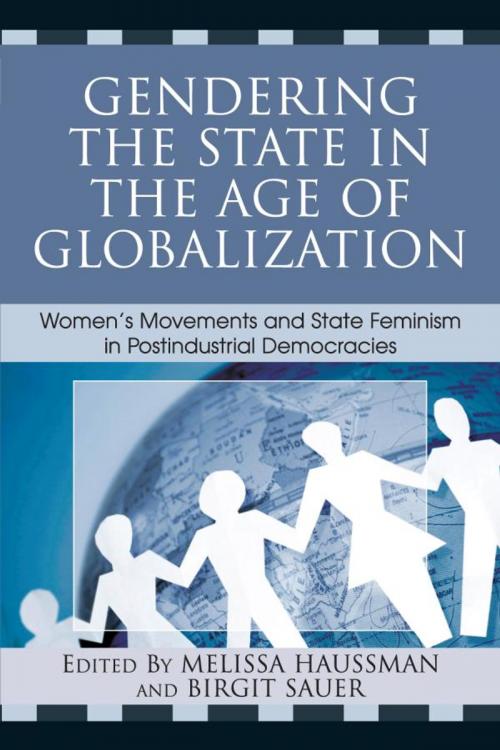Gendering the State in the Age of Globalization
Women's Movements and State Feminism in Postindustrial Democracies
Nonfiction, Social & Cultural Studies, Political Science, Politics, History & Theory, Social Science, Gender Studies, Women&| Author: | ISBN: | 9780742581401 | |
| Publisher: | Rowman & Littlefield Publishers | Publication: | April 26, 2007 |
| Imprint: | Rowman & Littlefield Publishers | Language: | English |
| Author: | |
| ISBN: | 9780742581401 |
| Publisher: | Rowman & Littlefield Publishers |
| Publication: | April 26, 2007 |
| Imprint: | Rowman & Littlefield Publishers |
| Language: | English |
Gendering the State is a ground-breaking collection of studies that examines the efforts of women in countries all over the world to frame public policy debates on nationally critical issues in gendered terms. This is the latest volume in the Research Network on Gender and the State (RNGS) collaborative studies. Using the RNGS model of women's movement and women's policy actor strategies to influence public policy debates and state response, the book looks at data gathered from ten European countries (including Finland and Sweden), plus Japan, Australia, Canada, and the United States from the 1990s to today.
The overall study is grouped into three distinct patterns of state change: state downsizing—particularly in social policy areas (Canada, Finland, the Netherlands, the United States, and Spain); expansion of state activities into previously less-regulated areas (Austria, France, Germany, and Sweden); and transformation—often constitutionally based—of representative structures (Australia, Belgium, Italy, Japan, and the United Kingdom). Examination of these patterns reveals the impact of the changes in state structures and national priorities on the effectiveness and ability of women's movement actors in achieving their goals.
Gendering the State is a ground-breaking collection of studies that examines the efforts of women in countries all over the world to frame public policy debates on nationally critical issues in gendered terms. This is the latest volume in the Research Network on Gender and the State (RNGS) collaborative studies. Using the RNGS model of women's movement and women's policy actor strategies to influence public policy debates and state response, the book looks at data gathered from ten European countries (including Finland and Sweden), plus Japan, Australia, Canada, and the United States from the 1990s to today.
The overall study is grouped into three distinct patterns of state change: state downsizing—particularly in social policy areas (Canada, Finland, the Netherlands, the United States, and Spain); expansion of state activities into previously less-regulated areas (Austria, France, Germany, and Sweden); and transformation—often constitutionally based—of representative structures (Australia, Belgium, Italy, Japan, and the United Kingdom). Examination of these patterns reveals the impact of the changes in state structures and national priorities on the effectiveness and ability of women's movement actors in achieving their goals.















